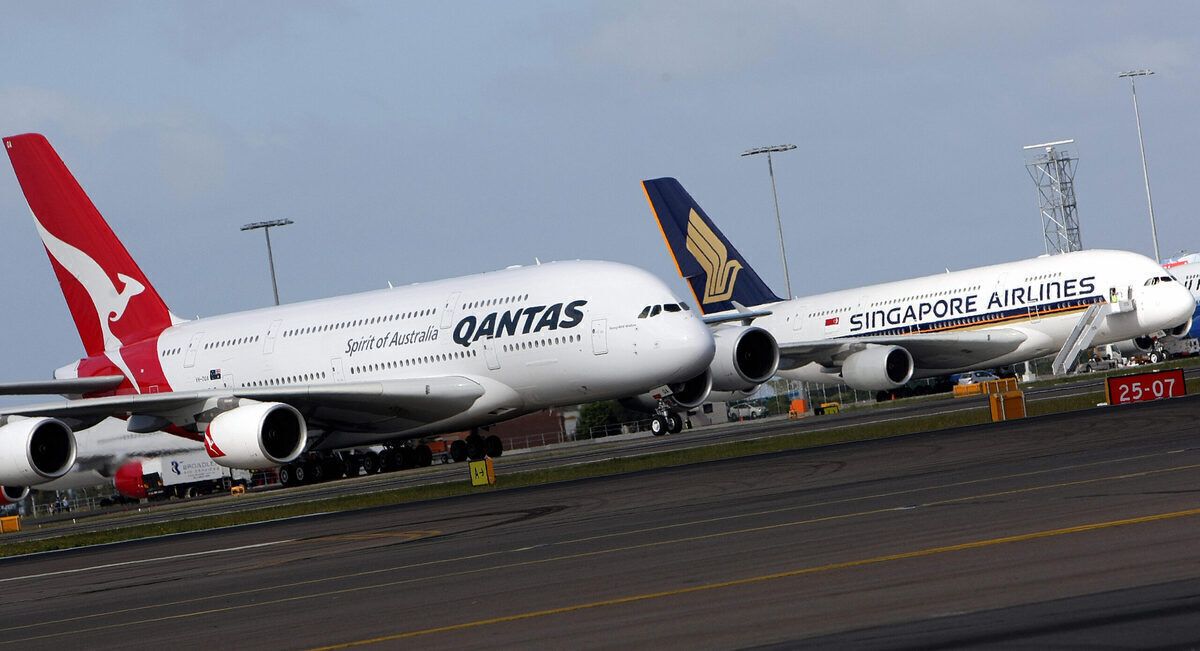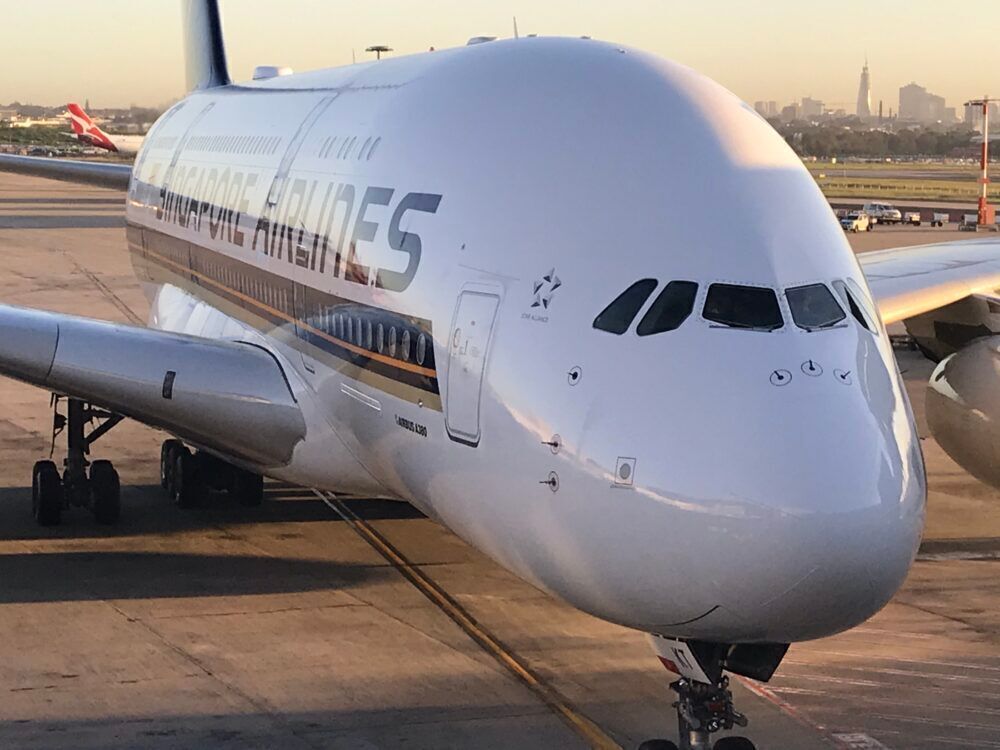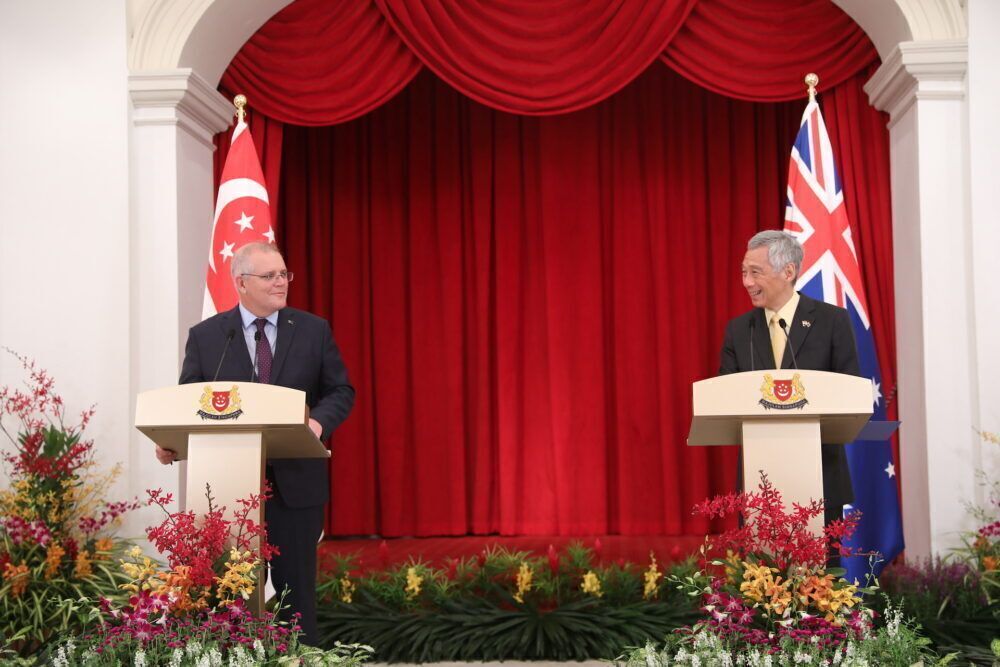Australia's on-again, off-again travel corridor with Singapore appears to be back on again. For much of the past year, the governments of both countries have made noises about a two-way travel corridor. However, to date, little progress has been made. But after a meeting between both Prime Ministers on Thursday, there is a fresh burst of enthusiasm.
Little aircraft & passenger traffic on a normally vibrant travel corridor
Normally, there's a lot of movement between Singapore and Australia. Until the travel downturn, multiple airlines jetted out of the southeast Asian hub to various Australian airports. In 2019, the last year of normal flying conditions, Australian Government statistics reveal 6,371,894 passengers flew between the two countries, with airlines offering 24,714 nonstop flights. The route between Singapore and Melbourne was Australia's busiest international sector that year.
Now, only Singapore Airlines maintains scaled-back flights. The most recent data available covers March 2021. In March, Singapore Airlines operated 260 flights in and out of Australia, offering 39 634 seats. But the airline only carried 11,282 passengers. Tough movement restrictions, entry requirements, quarantine regimes, and a general reluctance to board long-haul flights dampen demand.
Typically, there is a substantial amount of premium business travel between the two countries. There are also strong leisure and student passenger flows on these flights. Additionally, Singapore is often the transit airport of choice for millions of Australians heading further into Asia or towards Europe. The market is a rich source of revenue for the airlines that normally fly it, including the two dominant carriers, Singapore Airlines and Qantas.
The airlines would welcome any travel corridor. But despite a lot of noise about a travel corridor operating between Singapore and Australia, it has never progressed beyond the noise.
Prime Ministers of Singapore & Australia agree (on principle) to a travel corridor
Only two weeks ago, Australian Prime Minister Scott Morrison said travel corridors with Pacific Island countries were the next step for Australia travel corridor-wise. Now, with Morrison skipping off to the G7 meeting in Cornwall, he met on Thursday with Singapore's Prime Minister Lee Hsien Loong en route. Both voiced support for a travel corridor between Singapore and Australia.
"We discussed how two-way travel between Singapore and Australia can eventually resume, in a safe and calibrated manner, when both sides are ready," said Singapore's PM at a post-meeting press conference.
"There is nothing impeding us from getting on with the job of putting systems in place that will enable such a corridor to emerge," said PM Morrison.
It sounds positive, but there was no timeline, and the Australian Prime Minister spent less than six hours on the ground. At the time of publication, the Prime Ministerial entourage is pushing onto the United Kingdom, having just refueled in Dubai. The Australian G7 bound crowd is filling two Royal Australian Air Force VIP planes, including an Airbus A330-200 (A39-007) and a Boeing 737-700 (A36-001).
Stay informed: Sign up for our daily and weekly aviation news digests.
Meeting leaves many questions unresolved
In Morrison's wake are unresolved questions about vaccinations, health passports and their recognition, what level of vaccinations will be needed to trigger freedom of movement, and how to handle and respond to outbreaks in either country.
"There is still some time before we reach that milestone," Scott Morrison admitted on Thursday.
Lee Hsien Loong offered a little more clarity. Stressing the economic and social importance of traffic flows between the two countries, Singapore's PM said;
"We need to resume these people-to-people flows to maintain our close and excellent bilateral relationship. We need to prepare the infrastructure and processes to get ready to do this. It starts with mutual recognition of health and vaccination certificates, possibly in digital form.
"When all the preparations are ready, we can start small with an air travel corridor to build confidence on both sides."
Ideally, in this fresh reiteration of travel corridor speculation, the talk will result in some concrete moves forward.



